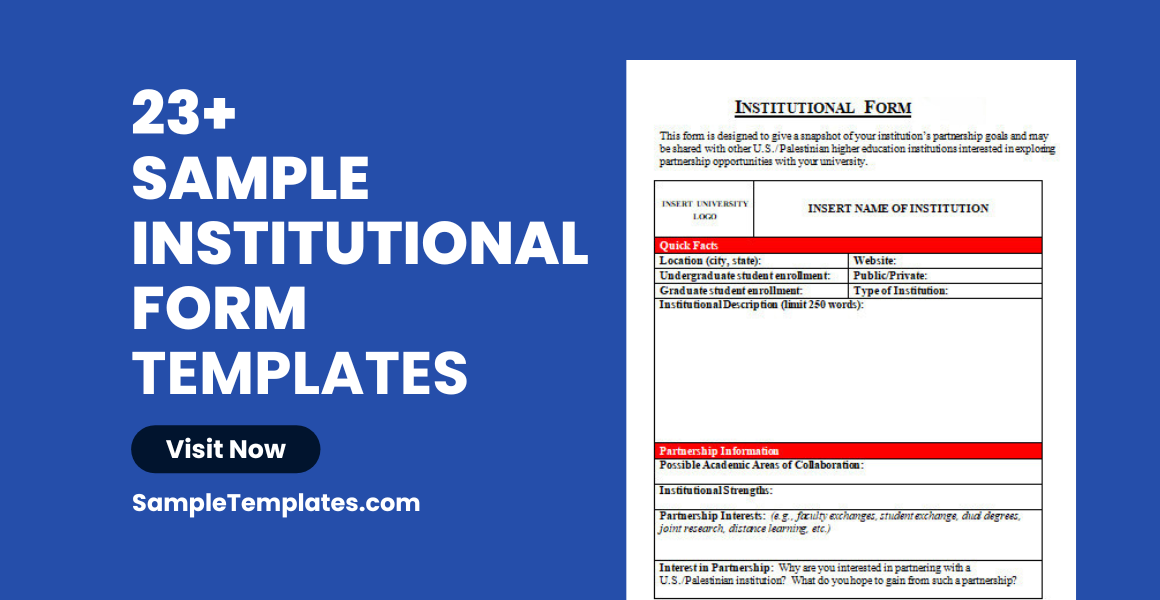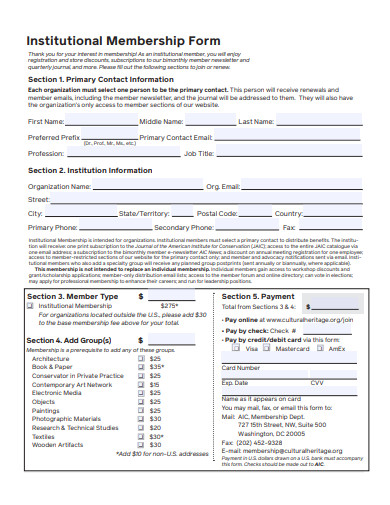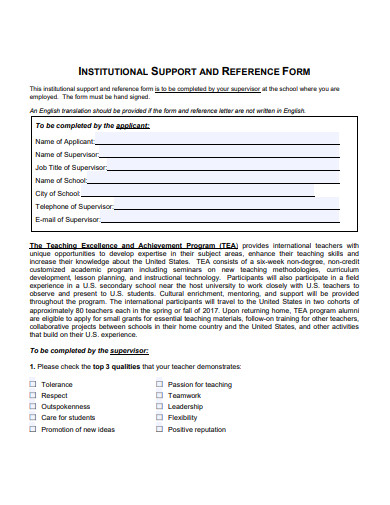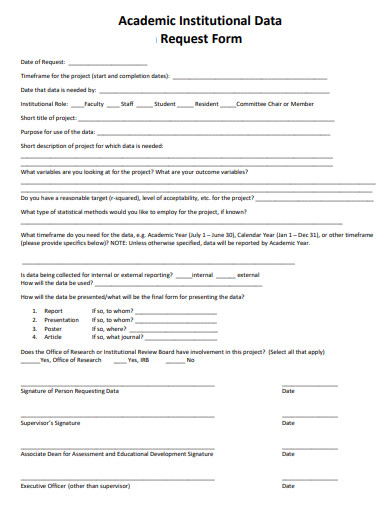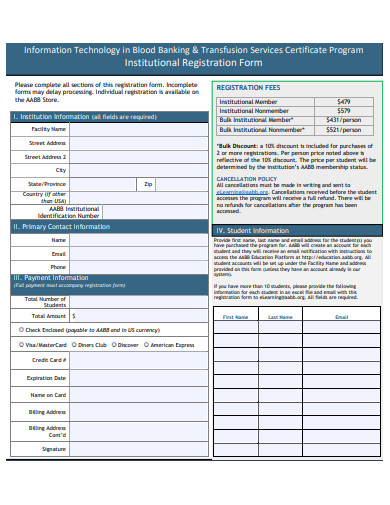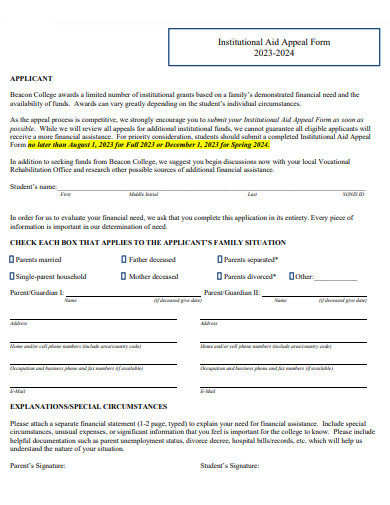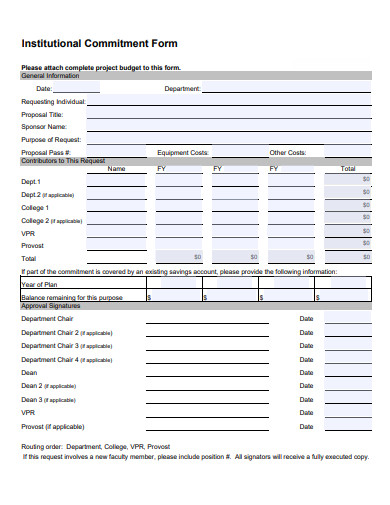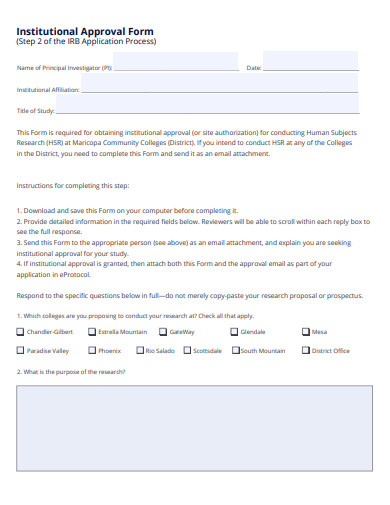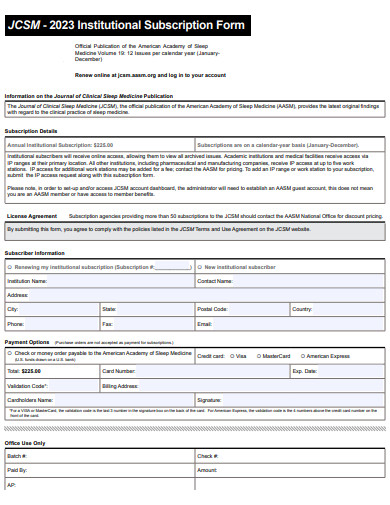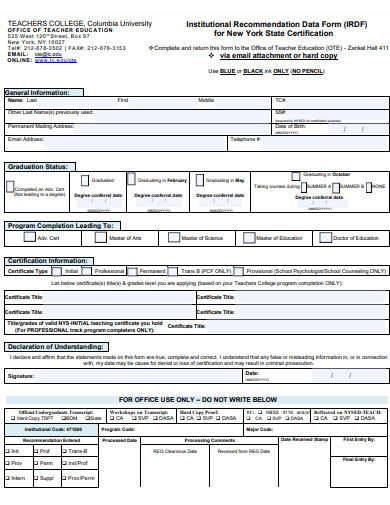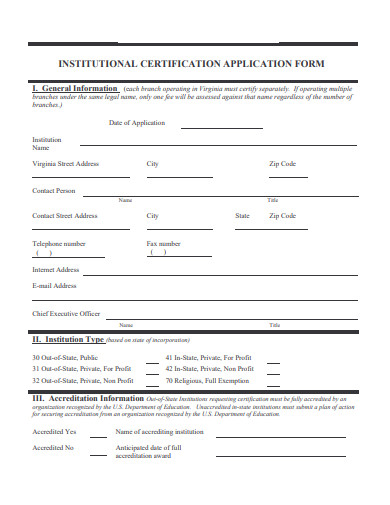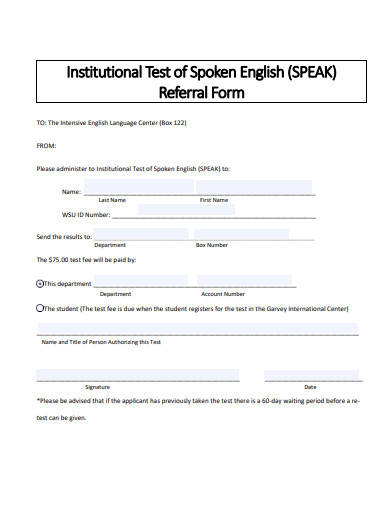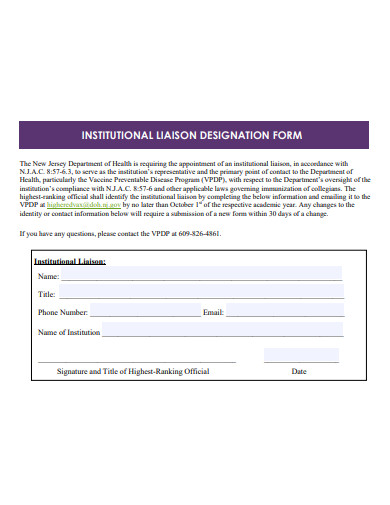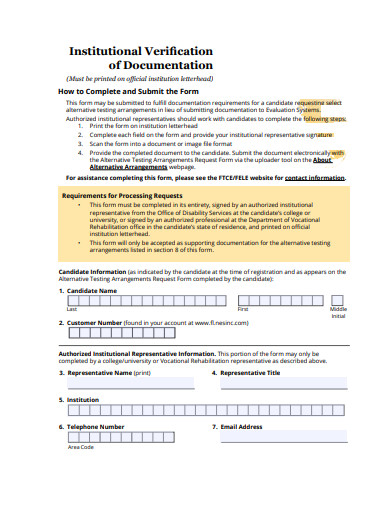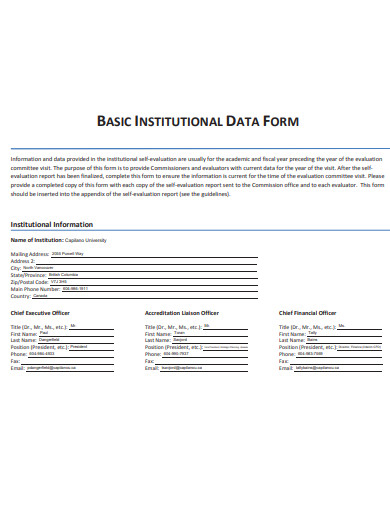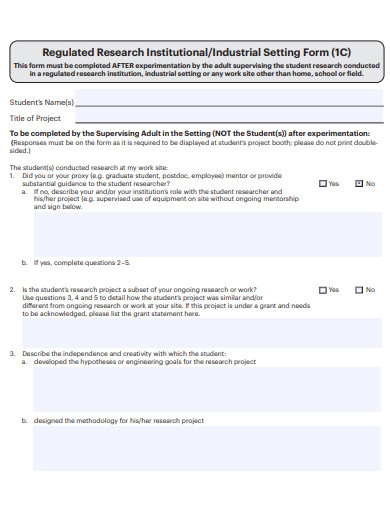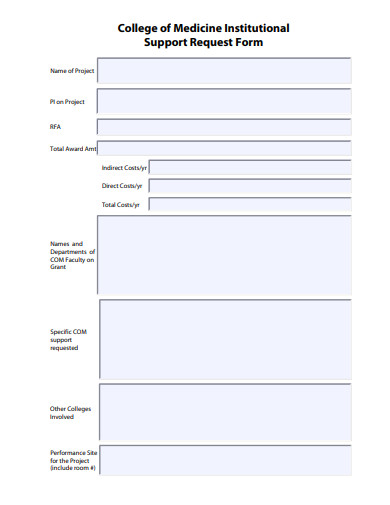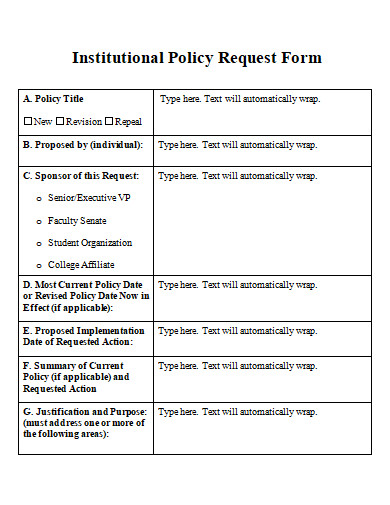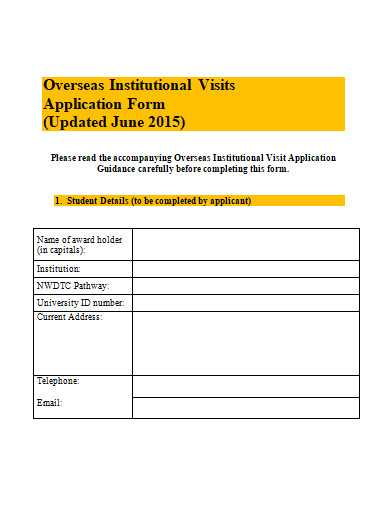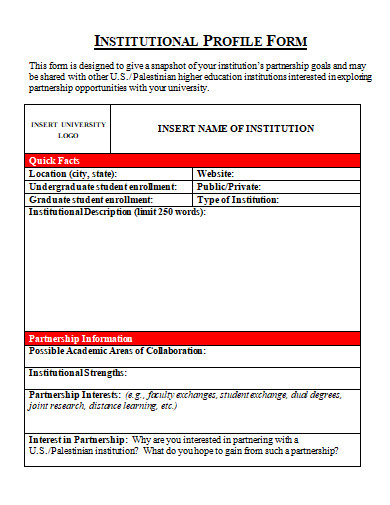In today’s modern landscape, the structure and function of institutions play a pivotal role in shaping society. The ‘Institutional Form’ not only refers to the physical architecture but also encompasses the organizational mechanisms, sample policies and processes. Dive deep into understanding how these forms have evolved over time, their influence on stakeholders, and the pivotal role they play in societal progression. Harnessing insights can lead to better policy-making and more efficient organizational structures.
23+ Institutional Form Samples
1. Sample Institutional Membership Form Template
2. Sample Institutional Support and Reference Form Template
3. Sample Institutional Access Request Form Template
4. Sample Institutional Withdrawal Form Template
5. Sample Academic Institutional Data Request Form Template
6. Sample Institutional Evaluation Form Template
What is an Institutional Form?
Institutional forms are a set of standardized design documents or templates that institutions use to gather, document, and process information. These can range from forms used in educational settings, like universities and schools, to forms in government agencies, businesses, and healthcare establishments.
Origins and Evolution
Historically, the need for institutional forms arose from the necessity to maintain consistency, ensure data accuracy, and manage large volumes of information. With the evolution of bureaucracy, especially in governmental and educational institutions, forms became an indispensable tool for data collection and processing.
The Importance of Institutional Forms
Institutions, by their very nature, are large bodies that often have to deal with vast amounts of information. Forms serve as a tool to:
- Ensure Consistency: With numerous departments and personnel, it’s essential that everyone is on the same page. Institutional sample forms standardize the information gathering process.
- Facilitate Record Keeping: Institutions need records. Whether it’s for accountability, future reference, or regulatory compliance, forms help in systematically gathering and storing information.
- Streamline Processes: Instead of gathering information ad-hoc or in inconsistent formats, forms provide a clear and efficient way to collect and process data.
Types of Institutional Forms
- Registration Forms: Common in educational and event settings, these collect basic information about an individual or entity enrolling in a sample program or event.
- Feedback and Survey Forms: Utilized to gather feedback or collect data on specific topics from a targeted audience.
- Application Forms: Used for job applications, university admissions, or any scenario where a selection process is involved.
- Claim and Request Forms: Common in insurance companies or HR departments to file claims or request services.
- Medical and Health Forms: Used by healthcare institutions to document patient history, consent forms, and other relevant health data.
Designing an Effective Institutional Form
Purpose-driven Content: Before designing a form, it’s essential to identify its primary purpose. This ensures that only relevant questions are included, making the form concise and effective.
User-friendly Design: A form should be intuitive. This includes clear instructions, logical sequencing of questions, and an aesthetically pleasing layout.
Accessibility: Ensure that forms are accessible to everyone, including those with disabilities. This might mean providing forms in various languages or ensuring they’re compatible with screen readers.
Feedback Mechanisms: It’s useful to have a section where users can provide a sample feedback on the form itself. This can highlight areas of improvement.
The Role of Technology in Institutional Forms
With the advent of technology, the nature and usage of institutional forms have witnessed significant changes. Here’s a glimpse:
- Digital Forms: These are electronic versions that can be filled online, reducing the need for sample paper and manual data entry.
- Automation: With software integration, data from forms can automatically update databases, streamlining the process.
- AI and Machine Learning: Advanced forms can now use predictive text, auto-validation, and even chatbot assistance to guide users in filling them out correctly.
Challenges in Implementing Institutional Forms
Despite their many advantages, there can be challenges in implementing institutional forms.
- Resistance to Change: Especially in older institutions, there might be resistance to transitioning from traditional methods to newer form processes.
- Data Security: With electronic forms comes the need to ensure that sensitive information is securely stored and protected from breaches.
- Over-complication: There’s a temptation to make forms exhaustive. However, overly complicated forms can deter individuals from filling them out.
Benefits of Institutional Forms
- Standardization: Consistent data input methods make processing and sample analysis easier.
- Efficiency: Reduces the need for back-and-forth communication.
- Record Keeping: Acts as a documentation tool, crucial for future references.
- Accountability: With dated and signed forms, it’s easier to track responsibilities and commitments.
7. Sample Institutional Registration Form Template
8. Sample Institutional Aid Appeal Form Template
9. Sample Institutional Commitment Form Template
10. Sample Institutional Approval Form Template
11. Sample Institutional Subscription Form Template
12. Sample Institutional Recommendation Data Form Template
13. Sample Institutional Certification Application Form Template
14. Sample Institutional Referral Form Template
15. Sample Institutional Designation Form Template
16. Sample Scholarship Institutional Form Template
17. Sample Institutional Admission Form Template
18. Sample Institutional Verification of Documentation Form
19. Sample Institutional Data Form Template
20. Sample Research Institutional Industrial Setting Form
21. Sample Institutional Support Request Form Template
22. Sample Institutional Policy Request Form Template
23. Sample Institutional Visits Application Form Template
24. Sample Institutional Profile Form Template
How do you Create an Institutional Form?
Institutional forms are crucial for the organized gathering of information within organizations. They help streamline data collection processes, ensure consistency, and facilitate easier documentation and analysis. Whether it’s for registration, feedback, or any other purpose, a well-designed form can save time and reduce errors. You can also see more templates like School Admission Forms. Let’s explore the steps to create an effective institutional form:
Step 1: Identify the Form’s Objective
Begin by pinpointing the precise purpose of your form. This foundational step will shape the content and structure of the form. Ask questions like: Why is this form being created? What specific data or information do we aim to gather? Engaging with stakeholders or potential respondents during this stage can offer valuable insights, ensuring the form aligns with its intended purpose.
Step 2: Pick Your Medium
With the proliferation of technology, you’re no longer limited to paper-based forms. Depending on your audience and institutional capabilities, you might opt for digital platforms like Google Forms, Microsoft Forms, or SurveyMonkey. When making your choice, consider factors like data analysis needs, storage, ease of distribution, and user accessibility.
Step 3: Develop Clear Questions
The essence of your form lies in its questions. Craft them with clarity and precision, ensuring they align with the form’s sample objective. Mix and match question types—like open-ended questions, multiple-choice options, and rating scales—to get comprehensive data. Be wary of jargon and aim for simplicity in language to avoid misinterpretations.
Step 4: Prioritize Design and Layout
An intuitive design can significantly enhance user experience. For paper forms, ensure consistent spacing, clear labeling, and logical sequencing of questions. If you’re using a digital platform, make sure it’s mobile-responsive. Group related questions together, and if the form is lengthy, consider adding a progress bar to inform respondents about the completion percentage.
Step 5: Run a Pilot Test
Before deploying your form on a large scale, test it with a smaller group. This pilot phase will help identify any ambiguities, overlooked errors, or glitches. Encourage feedback not only on the content but also on the form’s overall usability. Refine your form based on this feedback, ensuring it’s optimized for the wider audience.
In Conclusion, Institutional forms are whether paper-based or digital, play a pivotal role in the smooth functioning of many establishments. They provide structure, consistency, and clarity. However, like any tool, their efficacy lies in how they are designed and implemented. In the age of data and digital transformation, reimagining these forms to be more user-friendly and efficient is the way forward. You can also see more templates like Admission Form Samples.
Related Posts
Sample Sworn Affidavit Forms
Vehicle Inspection Forms Samples & Templates
Sample Employee Advance Forms
Sample Child Travel Consent Forms
Sample Testimonial Request Forms
Sample Employee Details Forms
Sample Divorce Forms
Sample Attestation Forms
Employee Performance Appraisal Form Templates
FREE 9+ Sample Presentation Evaluation Forms in MS Word
FREE 10+ School Admission Form Samples & Templates in MS Word | PDF
FREE 30+ Patient Consent Form Samples in PDF | MS Word
FREE 10+ Sample Sign Off Form Templates in PDF | MS Word
FREE 11+ Sample Medical Consultation Forms in PDF | MS Word
FREE 8+ Sample Donation Forms in PDF | MS Word
